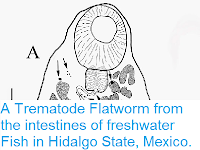The Early–Middle Oligocene deposits at Langdong in the Nanning Basin of Guangxi Province have produced numerous disarticulated remains of Fish and Reptiles, including numerous pharyngeal bones of an unknown Carp-like Fish. This is close to the presumed origin of Carp, Cyprinus, a group of Fish thought to have originated in South China in the Eocene or possibly Palaeocene.
In a paper published in the journal Vertebratica PalAsiatica in 2017, Chen Geng-Jiao of the Natural History Museum of Guangxi Zhuang Autonomous Region, and the State Key Laboratory of Palaeobiology and Stratigraphy at the Nanjing Institute of Geology and Palaeontology of the Chinese Academy of Sciences, Cen Li-Di, also of the Natural History Museum of Guangxi Zhuang Autonomous Region, and Liu Juan of the Department of Biological Sciences at the University of Alberta, and the Division of Paleontology at the American Museum of Natural History, formally describe the Langdong remains as a new species of Cyprinid Fish.
The new species is named Nanningocyprinus wui, where 'Nanningocyprinus' means 'Nanning-Carp', and 'wui' honours Hsianwen Wu, for his studies of Carp in China. The species is described from two nearly complete pharyngeal bones, one left and one right, with associated teeth; a further four specimens assigned to it.
Pharyngeal bone and teeth of Nanningocyprinus wui. NHMG 033663: (a) ventro-lateral view, (b) dentigerous surface view; NHMG 033664: (c) pitted surface view, (d) dentigerous surface view; NHMG 033665: (e) dentigerous surface view; NHMG 033667: (f) dentigerous surface view. Abbreviations: 1. tip of anterior limb; 2. anterior angle; P. pitted surface of pharyngeal bone; V. ventral surface of pharyngeal bone. Question mark indicates an uncertain structure that is a tooth-base pit near C1. All scale bars except (e) equal to 3 mm, scale bar of (e) equals to 1 mm. Chen et al. (2017).
See also...
Follow Sciency Thoughts on Facebook.







